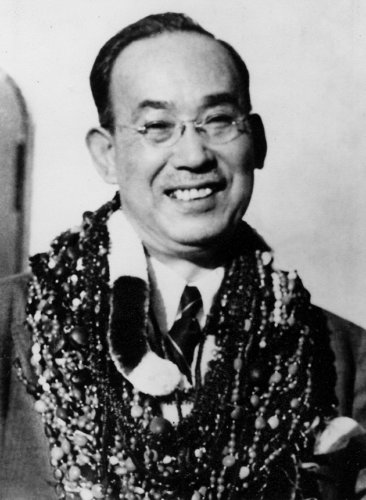
This is a true story of a man who dedicated his life to spreading Reiki, the universal life force.
Chujiro Hayashi (1880 – 1940) was one of 20 disciples who was certified by Usui as a Master to teach all aspects of Reiki therapy.
Particularly, he played a major role in the transmission of Reiki out of Japan.
If you are interested in the details of the amazing life of Mikao Usui, the founder of Reiki, please click the link below.
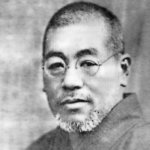
However, despite his important role in the development of Reiki, Hayashi’s life is not well known.
So, in this post, I would like to introduce Chujiro Hayashi’s life (especially during his naval career) in detail.
The Life of Chujiro Hayashi in the Imperial Japanese Navy
Hayashi was born on September 15, 1879, in Kanagawa Prefecture, Japan.
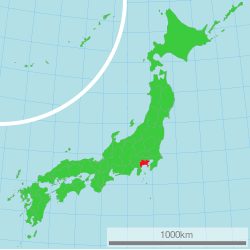
Source – Ministry of Land, Infrastructure, Transport and Tourism Numerical Information (Administrative Area)
On December 24, 1899, Hayashi entered the Imperial Japanese Naval Academy.
The building of Imperial Japanese Naval Academy
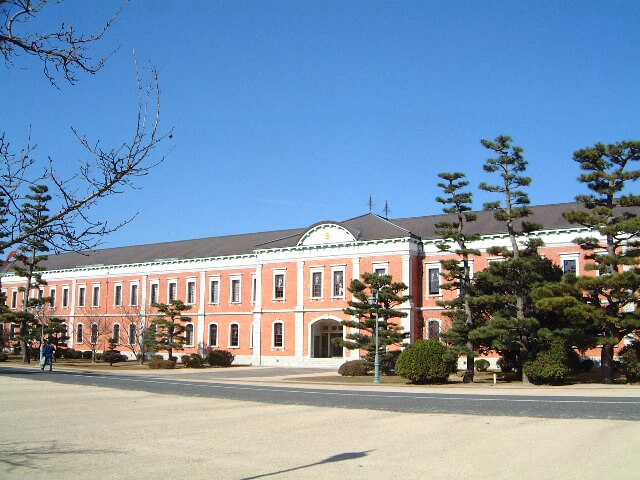
On December 14, 1902, Hayashi graduated from the Imperial Japanese Naval Academy and became a naval ensign candidate.
Then he became a naval ensign on December 28.
On February 4, 1904, the Empire of Japan decided to start the war against Russia in an emergency meeting, and thus Hayashi worked in the port department of the expedition.
During this period, Hayashi is recorded as having donated funds to build a statue of Takeo Hirose, a Japanese hero who was killed in the Russo-Japanese War.
The list of the donors of the funds for the construction of the statue of the late Naval Lieutenant Colonel Hirose.

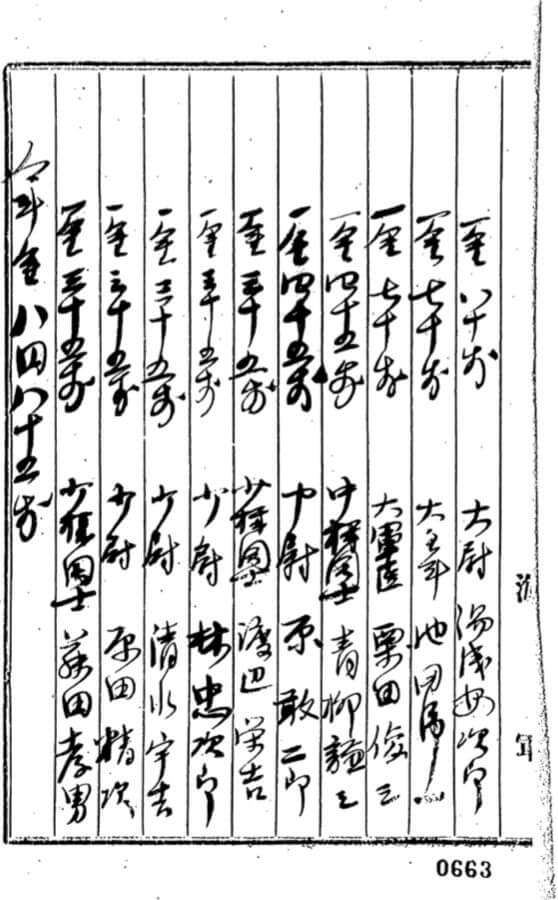
Source Center for Asian Historical Records, National Archives of Japan
Takeo Hirose (1868-1904). His selfless sacrifice during the Russo-Japanese War elevated him to the status of a deified national hero.
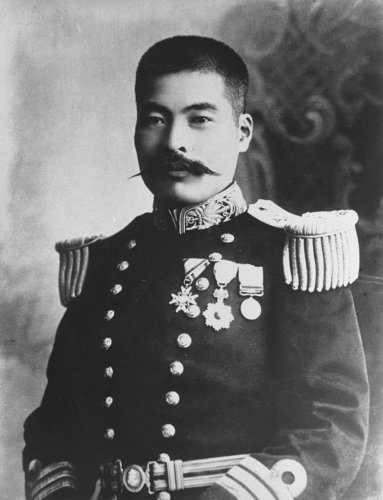
It is stated that Ensign Hayashi Chujiro donated 35 sen. Thirty-five cents is about 7,000 yen (about $65) at modern prices.

On September 5, 1905, the Russo-Japanese Peace Treaty was signed.
On December 1, 1914, Hayashi was promoted to the rank of naval major and appointed a staff member of the Maizuru Port Authority in Maizuru City, Kyoto Prefecture.
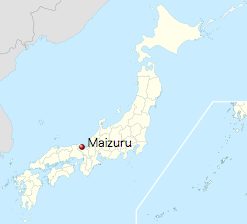
Source – Own work
Maizuru Port
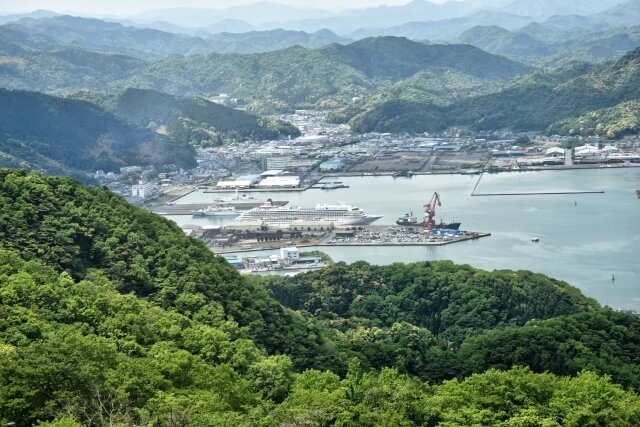
War Diary of the German-Japanese War (for December 1914).
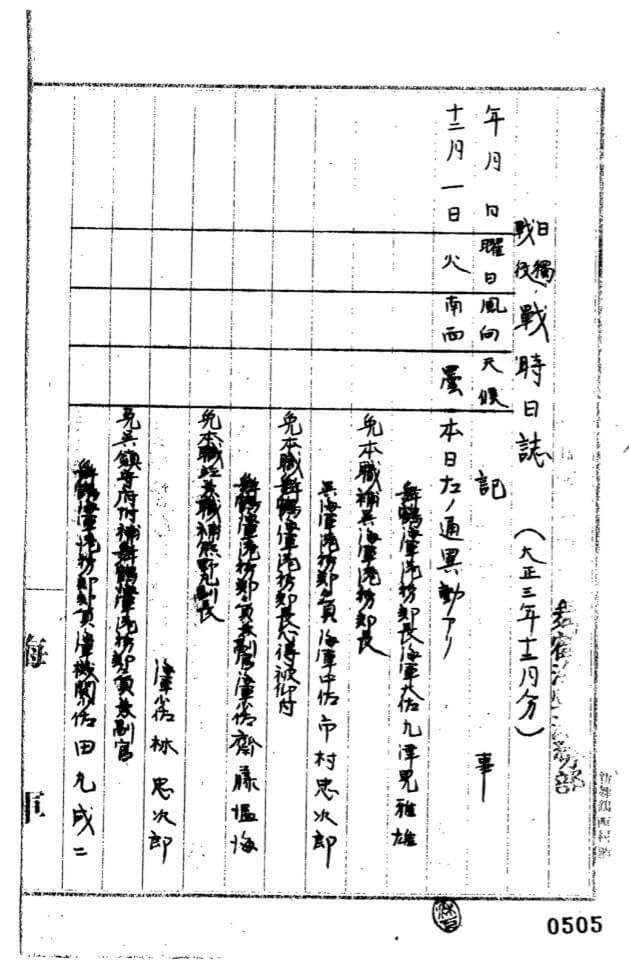
Source Center for Asian Historical Records, National Archives of Japan
The name of “Naval Major Chujiro Hayashi” is listed in the lower-left corner of the above diary.

On December 1, 1917, Hayashi was appointed a staff member of the Kure Port Authority in Kure City, Hiroshima Prefecture.
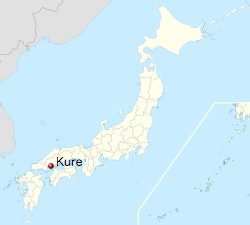
Source – Own work
Kure Port

Kure Naval District Office Building
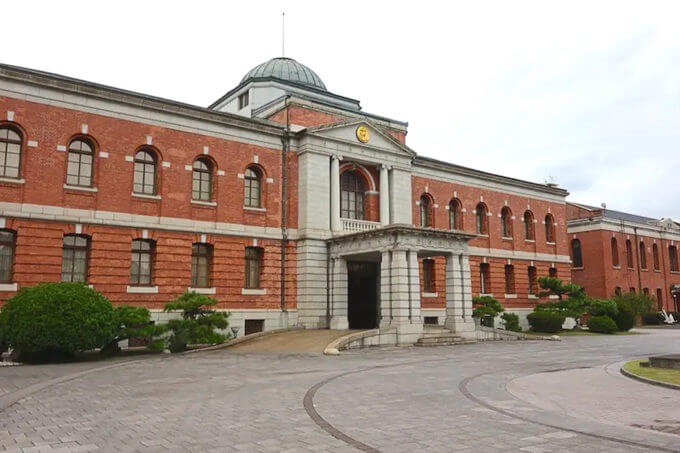
On December 1, 1918, Hayashi was appointed deputy.
On December 1, 1919, he was promoted to the rank of naval lieutenant colonel.
Then on January 7, 1921, he was a staff member of the Yokosuka Port Authority in Yokosuka City, Kanagawa Prefecture.
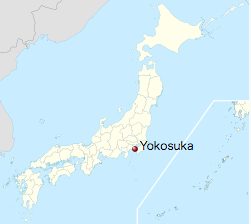
Source – Own work
Yokosuka Port and the Battleship Mikasa
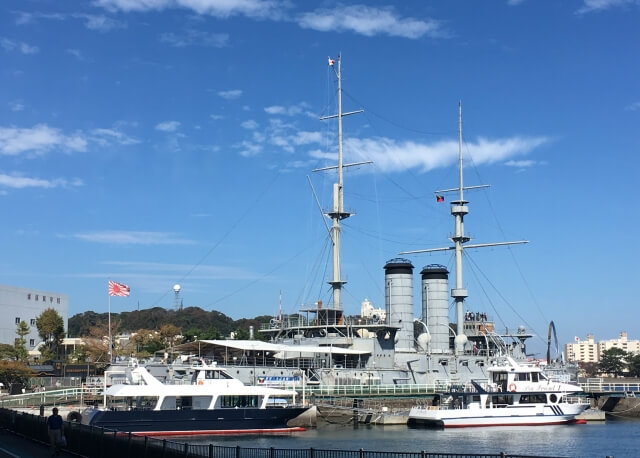
A report by Chujiro Hayashi titled “On miscellaneous vessels”
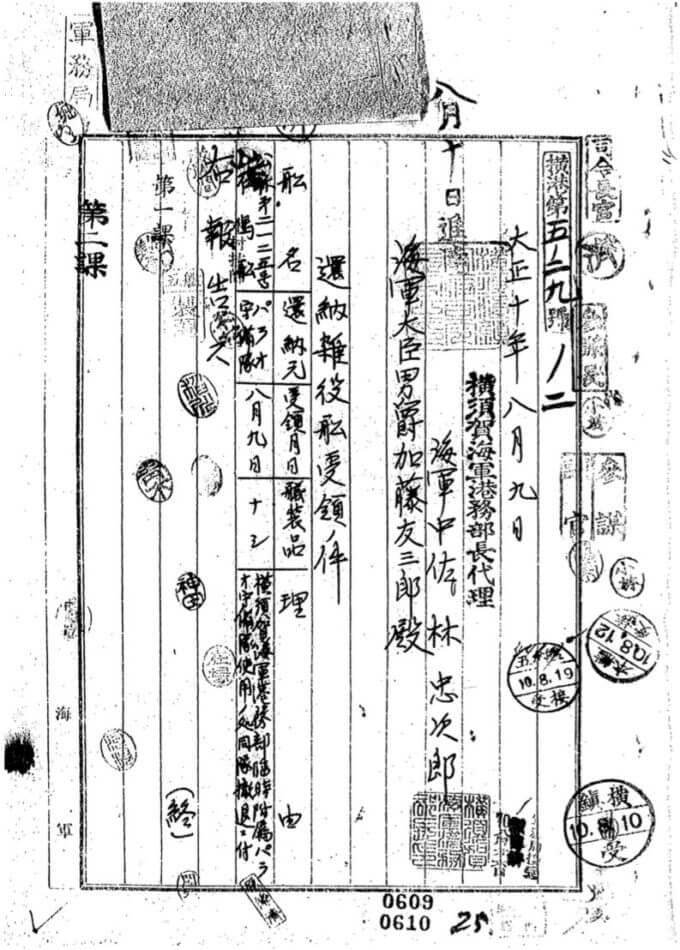
Source Center for Asian Historical Records, National Archives of Japan
This is a report dated August 9, 1921, from Lieutenant Colonel Chujiro Hayashi , Acting Chief of the Yokosuka Naval Port Authority, to Kato Tomosaburo, Minister of the Navy.

Baron Katō Tomosaburō (1861-1923)
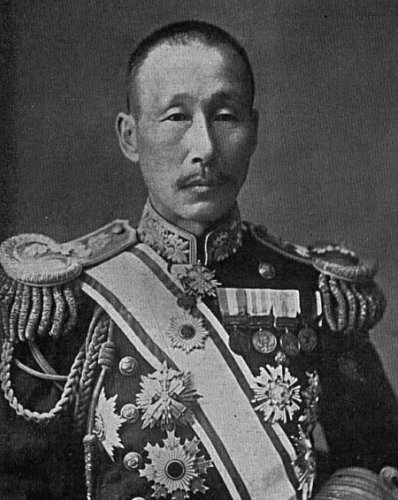
On April 1, 1923, Hayashi was appointed director of the Ominato Yoko Department (Key Port Department, later Ominato Guard District) in Mutsu City, Aomori Prefecture, an agency that governed the rear of the fleet as a naval base for the IJN.
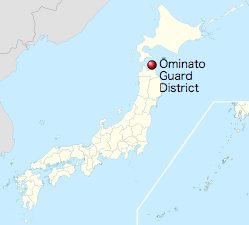
Source – Own work
Surviving pre-war building of the former Ōminato Guard District

Then on December 1, 1923, Hayashi was promoted to the rank of naval colonel.
The above is Hayashi’s exact naval history as recorded by the Imperial Japanese Navy.
Chujiro Hayashi’s Life After His Retirement From the Imperial Japanese Navy
After that, Hayashi retired as a naval colonel.
On January 16, 1924, from among the many disciples of the Head Office and other prefectural branches throughout Japan, Usui selected twenty disciples of outstanding learning, character, and therapeutic practice (19 of them participated).
Usui gave them attunement and gave them the qualifications of a Master and entrusted them with the attunement of each branch.
One of the Masters chosen by Usui at that time was Hayashi.
Below is a photo of the members of Usui Reiki Therapy Gakkai. Mikao Usui is in the second row from the front, sixth from the left. Hayashi is in the back row, fourth from the right.
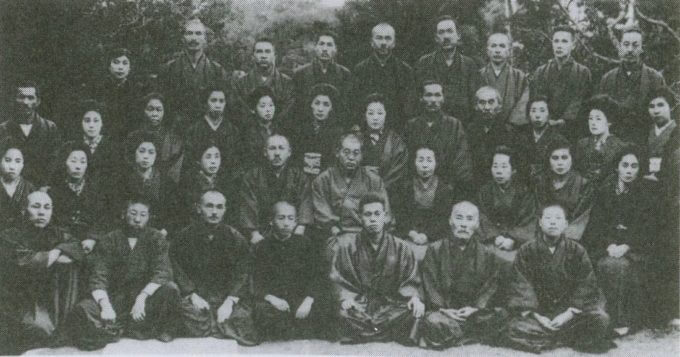
After retiring from the Navy, Hayashi opened a Reiki clinic in 1925 in Shinano-Cho (now Shinjuku Ward) in Tokyo.
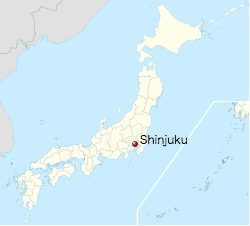
Source – Own work
The streets of Shinjuku in the Taisho era (1912-1926)
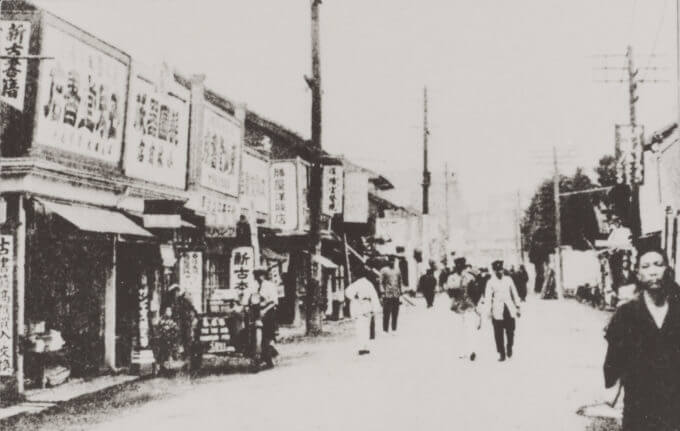
Source Chronology of Shinjuku City History
The clinic had eight treatment tables, where each patient was treated by two Reiki therapists.
One would perform Reiki treatments on the patient’s head and the other on the upper half of that patient’s body.
Hayashi founded the Hayashi Reiki Kenkyukai (Society) in 1930, which was a separate group from the Usui Reiki Therapy Gakkai.
However, Hayashi continued to teach Reiki therapy as “Usui Reiki Therapy” after he became independent.
Hayashi spread Reiki throughout Japan and in Hawaii in 1938, where he conducted workshops.
Hayashi held Reiki seminars once a month in Tokyo and Osaka.
He went to lecture in provinces such as Aomori, Mie and Wakayama prefectures when called upon.
Hayashi also authorized the establishment of the Osaka and Daishoji branches.
A magazine interview with Shoyo Matsui (1870-1933), a playwright active at the beginning of the 20th century, appeared in the March 4, 1928 issue of Sunday Mainichi, published by Mainichi Shimbun Publishing Inc., as a valuable source of information about Hayashi’s personality.
Shoyo Matsui (1870-1933)
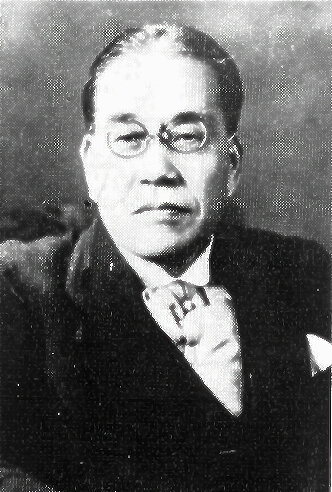
In the interview titled “Cure All Diseases with One Hand,” Matsui said the following about Reiki and Hayashi.
I was taught Reiki by a former Navy colonel named Chujiro Hayashi.
He was quite serious and compassionate, a man who seemed to have been born to do this business.
He spends his mornings treating patients and five days out of the month teaching therapy to those who come to learn Reiki.
The photo below is a certificate issued by Hayashi’s wife, Chie.

Yoshio Ushio
I gave the art of
Usui Reiki Therapy
For mental and physical improvement
April 19, 1943
Instructor Chie Hayashi
Although Hayashi’s spread of Reiki abroad seemed to be making good progress, the shadow of the war that was sweeping the entire world would change Hayashi’s fate.
In 1939, Admiral Isoroku Yamamoto was appointed Commander-in-Chief of the Allied Fleet.
Yamamoto had spent a long period of time in the United States and had worked in the field of naval military and air administration.
Yamamoto believed that if Japan were to go to war with the United States, the war should be settled in one fell swoop with an air attack at the start of the war.
And as early as 1928, Yamamoto was already advocating an attack on Hawaii.
In May 1940, the main U.S. Pacific Fleet, which had been stationed in San Diego to restrain Japan’s southern policy, was transferred to Pearl Harbor in Hawaii.
Hayashi was a reserve officer and was familiar with Hawaiian affairs at the time.
So, the Imperial Japanese Navy asked Hayashi, as a reserve officer to return to the Navy.
For Hayashi, who had been spreading Reiki to cure people’s illnesses and make them happy, he could not bear to be complicit in a war that would make so many people suffer.
If Japan starts a war with the United States, his disciples in Hawaii will also spill blood.
Hayashi was a Buddhist and a pacifist.
I would rather die than to have a hand in an atrocious war!
On May 11, 1940, Hayashi committed suicide at his villa in Atami, Izu.
According to one theory, he was supposed to have committed seppuku.

Hayashi died at the age of 61.
After Hayashi’s death, his wife, Chie took over the Hayashi Reiki Kenkyukai and traveled all over Japan.
In 1941, Hayashi’s Buddhist service was held at the Daishoji branch, and several more services were held afterward.
Photo at the Buddhist memorial service for Hayashi at the Daishoji branch. Hayashi’s wife is in the left hand in the middle of the front row.

Hayashi had two children, but they complained that their fathers were often away from home to promote Reiki.
So, neither of them followed in their father’s footsteps.
Furthermore, after WWII, Chie became a member of a religion and so many members left the Hayashi Reiki Kenkyukai.
Chie donated the land where the Hayashi Reiki Kenkyukai was located, and a group of buildings of the religious community now stands on it.
Thus, the Hayashi Reiki Kenkyukai ended in her generation.
Was Chujiro Hayashi a Naval Physician?
By the way, some sources say that Hayashi was a naval physician.
Actually, someone at the National Diet Library checked the taxpayer records of the Tokyo city at that time and confirmed the tax records of Hayashi as a doctor.
According to the report, the tax was paid at the address where Hayashi’s Reiki treatment center was located.
So, was Hayashi a naval physician in the Imperial Japanese Navy?
I don’t think, on the following two reasons, that Hayashi was a naval physician.
First, in the Imperial Japanese Navy, the educational institution for training naval physicians was the Naval Medical School.
Naval Medical School
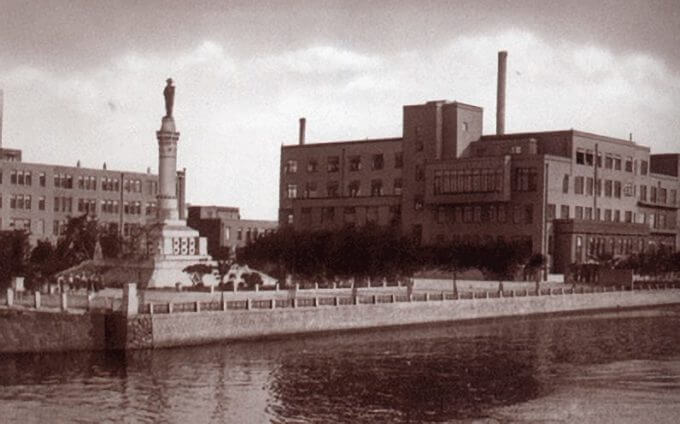
Generally, the IJN recruited graduates of university medical schools and medical technical schools to serve as naval physicians in the Navy.
Thus, naval medical officers were recruited as naval medical students while they were still in their schools.
And upon graduation, graduates of the university medical schools were commissioned as Naval Medical Lieutenants, and graduates of the medical technical schools were commissioned as Naval Medical Ensigns.
Then, after basic education at the Naval Gunnery School, they entered the Naval Medical School.
On the other hand, the Imperial Japanese Naval Academy was an institution that trained senior officers engaged in combat, primarily related to gunnery, torpedoes, and communications.
Therefore, graduates of the Imperial Japanese Naval Academy, like Chujiro Hayashi, did not usually become naval physicians.
Second, there is documentation supporting the above view that Hayashi was not a naval physician.
Interestingly, as a valuable source of information about Hayashi during his time in the Imperial Japanese Navy, Masaki Nishina, a Japanese Reiki Master, found in one of the university’s databases what appears to be a manual written by Chujiro Hayashi.

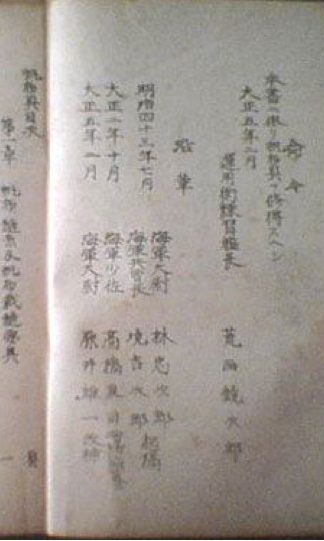
This is a manual for the maintenance of canvas equipment on operational training ships of the Imperial Japanese Navy.
An operational training ship is a warship that had been retired from the front line and reused as a training ship.
Japanese training battleship Hiei
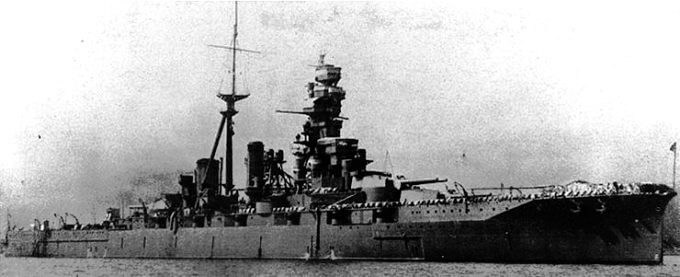
Training Cruiser Katori
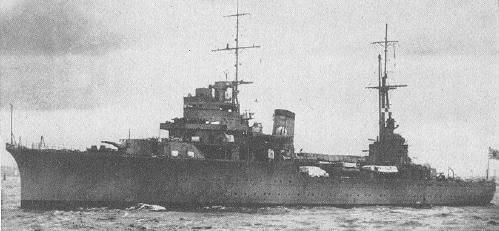
The name of Chujiro Hayashi can be seen on the back of the cover as one of the contributors of the manual.
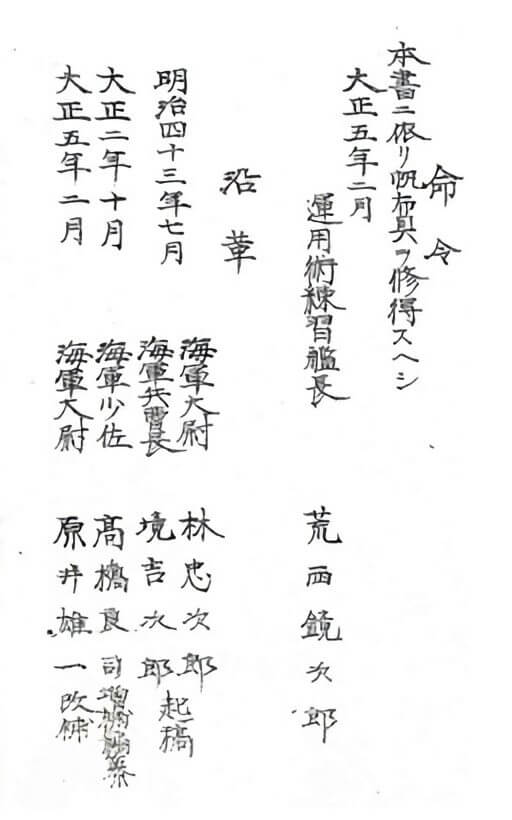
The word “History” is followed by “July Meiji 43 (1910), Naval Captain, Hayashi Chujiro.”
In 1910, Hayashi was 31 years old.
At the time of his retirement from the Imperial Japanese Navy, he was a 47-year-old naval colonel, so there seems to be no inconsistency between the manual’s description and his career.
According to Nishina, there was no other person in the Imperial Japanese Navy with the same name as Chujiro Hayashi, so it is almost certain that the name in the manual is that of Chujiro Hayashi himself.
By the way, typically, in the Imperial Japanese Navy, the rank of the naval medical officer is described as, for example, “Naval Physician Captain” not “Naval Captain.”
The document below is a copy of Naval Gazetteer (Departmental Inward Bound) No. 536, dated December 1, 1921, prepared by the Department of the Navy.
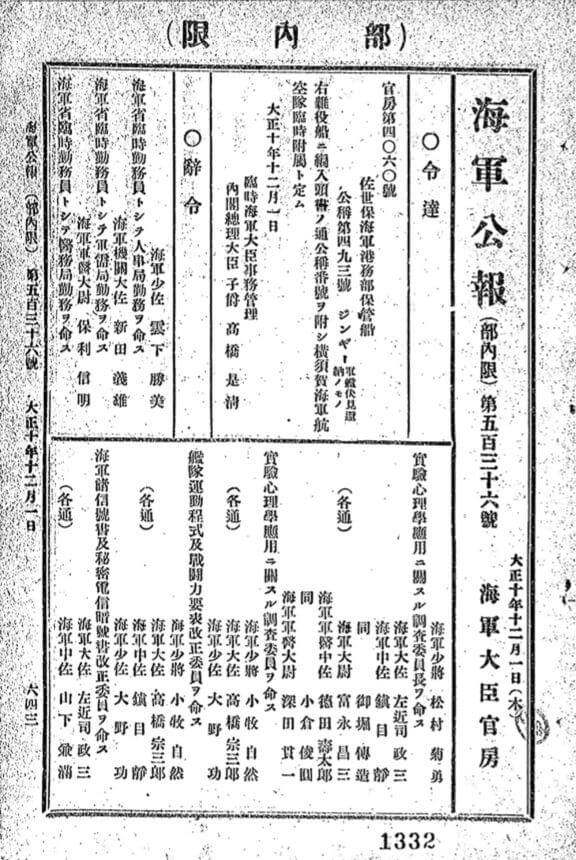
Source Center for Asian Historical Records, National Archives of Japan
The photo below is an enlarged version of a portion of the right side of the bottom column of the document above.
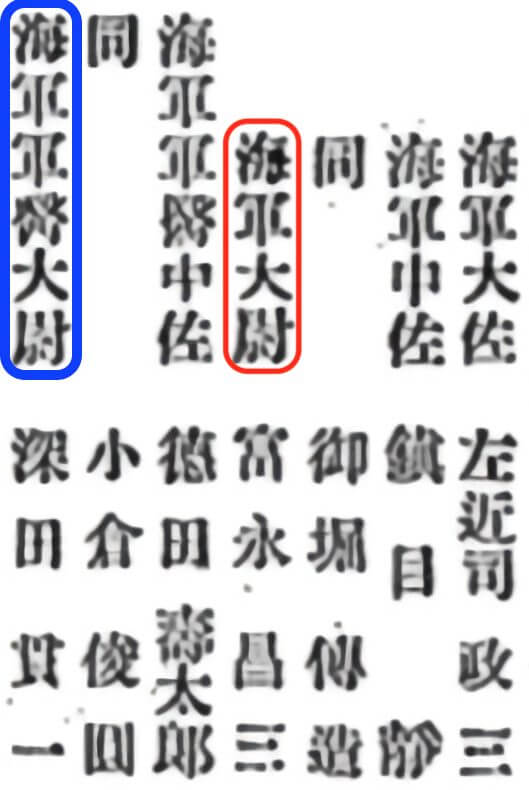
In the image above, the rank circled in red is “Naval Captain” Shozo Tominaga, while the rank circled in blue is “Naval Medical Officer Captain” Kanichi Fukada.
In this way, in the ranks of the Imperial Japanese Navy, “Naval Captain” and “Naval Medical Captain” were listed with a clear distinction.
Now, let’s check again the above manual with Hayashi Chujiro’s name on it.

As you can see above, Hayashi’s rank is clearly written as “Naval Captain,” not “Naval Medical Captain.”
Also, from the table of contents of the manual, it seems unlikely that Hayashi was a naval physician, as the manual is about the maintenance of canvas equipment for training ships and not about medical content.
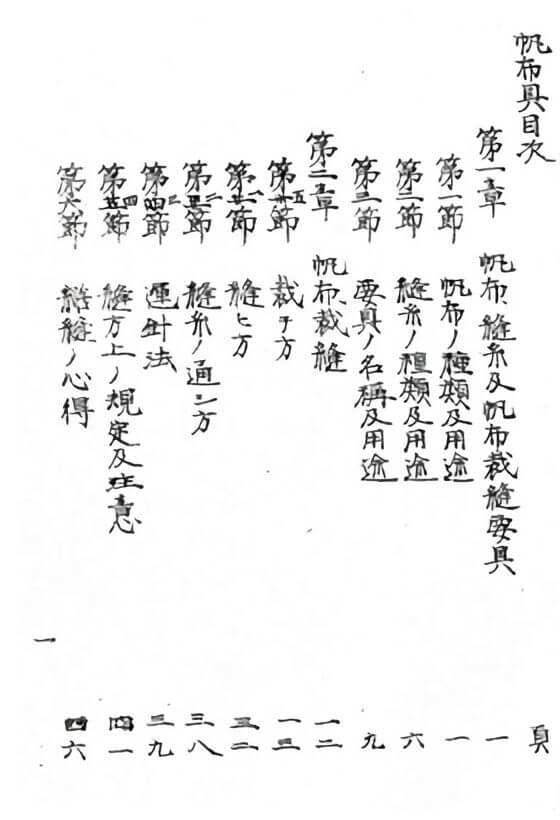
Furthermore, the names of the four contributors are listed on the back cover of the manual, along with the dates.
Therefore, the backgrounds of the four contributors are considered to be comparable.
Regarding the second contributor, Kichijiro Sakai, a public inventory of the National Institute for Defense Studies states that Sakai was Chief Petty Officer and the boatswain of the Battleship Mikasa from April, the first year (1904) of the Russo-Japanese War, until after the Battle of the Yellow Sea in August.
Japanese Admiral Tōgō’s flagship, Mikasa

Regarding the third contributor, Ryoji Takahashi (1878-1931), Takahashi served on board the second-class cruiser Naniwa as a captain in the Battle of the Sea of Japan during the Russo-Japanese War.
Japanese cruiser Naniwa firing salute at Kobe, 1887
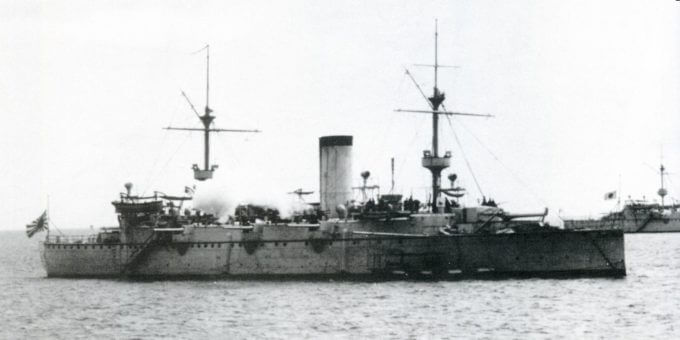
In 1920, Takahashi was appointed port master of the Maizuru Port Authority in Maizuru City, Kyoto Prefecture as a naval colonel.
It’s worth noting that Takahashi’s career as a naval colonel, who was given the head of the port department, has something in common with Hayashi’s.
Regarding the fourth contributor, Yuichi Harai (death in 1956), Harai was assigned to the squadron commander of the battleship Mikasa as of December 1, 1913, and was promoted to the rank of major on December 1, 1916.
In this way, none of the other three members listed with Chujiro Hayashi in the manual are naval physicians.
Therefore, it may be reasonable to assume that Hayashi was not a naval physician.
References
- Yoshiaki Teraishi (2008). “What is Reiki in Japan?”
- Tadao Yamaguchi (June 2013). “Jikiden Reiki: The Truth and Progress of Reiki.”
- Toshitaka Mochizuki (June 2013). “Healing Hands: Reiki Healing to energize your mind and body.”
- Hiroshi Doi (May 1998). “A Modern Reiki Method for Healing.”
- Masaki Nishina (July 2013). “Reiki and Japan: A Cultural View of Western and Japanese Reiki, 2nd ed.”
- Japan Center for Asian Historical Records (JACAR) National Archives of Japan
- Military Archives of the National Institute for Defense Studies (NIDS)
- Chujiro Hayashi in Wikipedia.
Published on July 6, 2020
Written by OTAKUPAPA

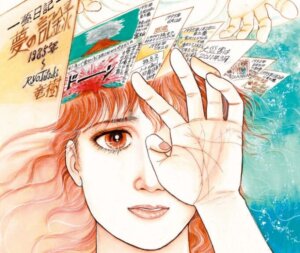
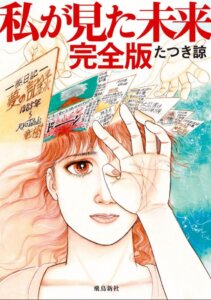
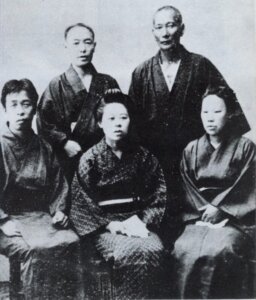

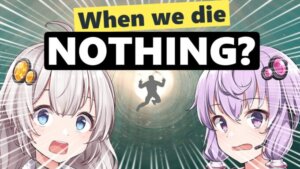
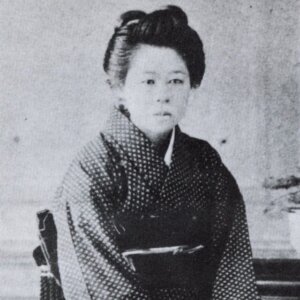
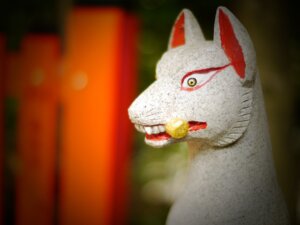
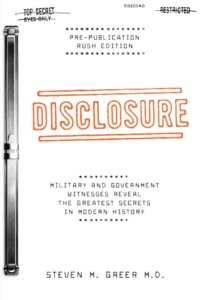
Comments